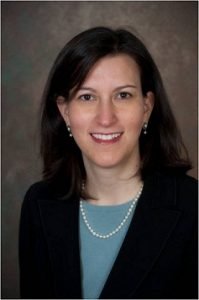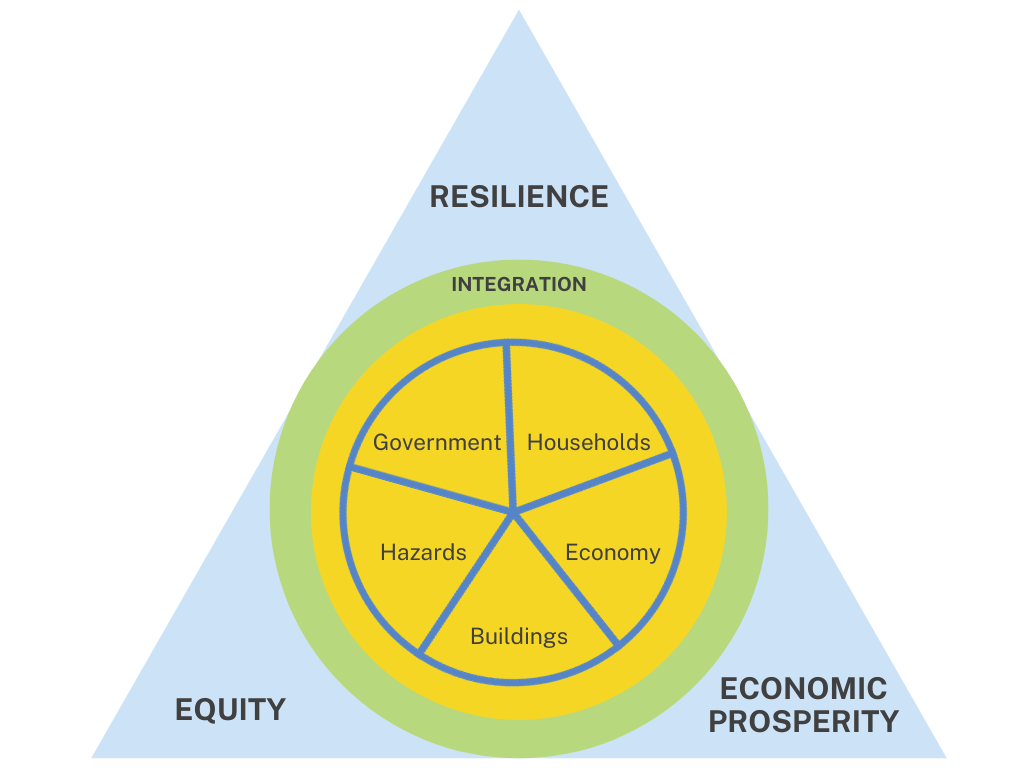NHERI Partners with CHEER Hub on Hurricane Decision-Making Framework
Software tool will close the gap between mitigation solutions and implementation
Published on July 29, 2024

Rachel Davidson, principal investigator and director of the CHEER Hub, University of Delaware
In the field of natural hazards damage mitigation, the U.S. National Science Foundation-supported CHEER Hub seeks to close the gap between practical solutions for preventing hurricane damage and their real-world implementation. CHEER, which stands for Coastal Hazards, Equity, Economic prosperity, and Resilience, is a five-year, $16.5M project and is part of the Coastlines and People program, CoPe.
Principal investigator and director of the CHEER Hub is University of Delaware Professor Rachel Davidson. She is also a core faculty member of the Disaster Research Center.
With equity and economic growth in mind, the CHEER Hub is developing a policy analysis software tool to help design and evaluate hurricane risk at a regional level. It is similar to tools such as HAZUS, developed by FEMA (Federal Emergency Management Agency), and IN-CORE, developed by NIST (National Institute of Standards and Technology). But the CHEER Hub framework has a distinct emphasis on decision-making. It is called the Stakeholder-based Tool for the Analysis of Regional Risk, or STARR.
Decisions, decisions
As Davidson puts it, the STARR framework will facilitate future disaster research and practice in a way that acknowledges – and incorporates – the decision-making required to make protective changes against hurricane damage. It is a down-to-earth notion: To overcome barriers to implementing risk-reduction strategies, we must account for ways people and groups make decisions in the real world.
“For instance, we have models that describe how households make decisions about mitigation and insurance purchases,” Davidson says. “But we also have models describing how insurance companies and government agencies make decisions. They all interact with each other — and the loss model.”
By adding this crucial understanding to current models, we can develop policies more likely to be implemented, Davidson emphasizes. “We can think ahead about how these different stakeholders are likely to react to the events, what the outcomes would be for them specifically.”
Ultimately, Davidson says, CHEER aims to facilitate mitigation policies that align with how people really make decisions. “Then we can find win-win solutions. For example, policies that will help the building owner, and the insurance industry, and the government.”

The CHEER Hub's six research thrusts.
NHERI SimCenter and DesignSafe partnerships
Because computational modeling is at the center of the CHEER Hub effort, NHERI SimCenter and DesignSafe are natural partners. Several modules in the STARR framework are similar to SimCenter modules, Davidson notes. "Together we’re leveraging our resources, our joint interests and complementary skill sets.”
CHEER Hub faculty member Ertugrul “E.T.” Taciroglu, professor of engineering at UCLA, is working on STARR with the SimCenter development team.
“It’s been a meaningful collaboration,” Davidson says. For CHEER, a big advantage to collaborating with DesignSafe and the SimCenter is the connection to the NHERI network. “This will allow STARR code and data to have a long-term home. When the CHEER award is complete, people can find our work via DesignSafe and make use of it.”
A focus on “equity and economic prosperity”
The 19 CHEER Hub faculty members have diverse research backgrounds. As well as engineers, CHEER faculty are public policy specialists, economists, sociologists, and physical scientists. Supporting their work are more than 20 post-doctoral researchers and graduate students – again, from a variety of disciplines.
Davidson believes the CHEER Hub and the STARR tool will guide future natural hazards research in a way that tightly integrates social science, physical science, and engineering contributions.
As an example, CHEER faculty engage with a set of grass-roots community partners that provide services to residents. The goal is to understand and document the effects of a hurricane in these communities – and incorporate these impacts into CHEER models. “We want our modeling to reflect the way hurricanes affect these communities — describing the impacts they care about most in terms that make sense to them.”
In addition, the CHEER Hub works with a group of practitioner partners. These are town managers, state mitigation offices, and insurance agencies. On the federal level, practitioner partners include the Housing and Urban Development agency (HUD) and FEMA. “People in this group are potential users of our tool, and we’re working with them to make STARR as helpful as possible.”
Going the final mile
An engineer herself, Davidson not infrequently hears colleagues express a common frustration: Researchers devise workable solutions to mitigate damage from natural hazards, but the solutions often are not implemented.
It is difficult, she admits. There are real challenges. “If disaster losses were a purely technical issue, we would be doing better as a society.”
Hence the CHEER Hub’s focus on developing policies that align with people’s natural decision-making. “I think that’s the missing piece, why there’s a gap, for example, between what NHERI research engineers have developed, on the one hand -- and what’s being implemented in the real world, on the other,” Davidson says.
“That’s the gap we are aiming to bridge. We think our work will lead to real and positive change.”





